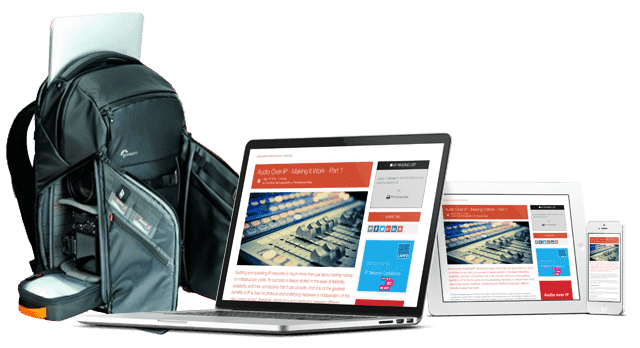Essential Guide: High Dynamic Range Broadcasting
November 20th 2019 - 01:00 PM
HDR offers unbelievable new opportunities for broadcast television. Not only do we have massively improved dynamic range with the potential of eye-watering contrast ratios, but we also have the opportunity to work with a significantly increased color gamut to deliver vivid and highly saturated colors.
The electronics and technology available during the early design of standard dynamic range television resulted in a highly compromised system. The pictures lacked sparkle in specular reflections due to the limited luminance range, and the color often looked washed out because of the limited color gamut.
Although HDR fixes these limitations, there is much more to achieving stunning video images and an outstanding user experience than just replacing the cameras. Whole workflows must be re-designed, working practices must be re-thought, and attitudes to making video moves to the aesthetic.
This Essential Guide, supported by AJA Video Systems, not only provides a comprehensive view of how HDR works, but through practical application demonstrates how to get the best out of HDR systems.
Download this Essential Guide today if you are an engineer, technician or manager, looking to improve your practical knowledge of HDR. What are the relevant standards? What’s the difference between OETF and EOTF? And what do 1,000 NIT monitors deliver? All these questions, and more, are answered in this Essential Guide.
Creatives and program makers looking to get ahead need to understand the technology to fully stretch HDR and deliver an outstanding and uncompromised viewing experience. HDR workflows now allow us to pull detail out of the shadow and see specular highlights like never before in the history of broadcast television.
Download this Essential Guide today to help you deliver on your creativity.
Supported by
You might also like...
Phil Rhodes Image Capture NAB 2025 Show Floor Report
Our resident image capture expert Phil Rhodes offers up his own personal impressions of the technology he encountered walking the halls at the 2025 NAB Show.
Microphones: Part 9 - The Science Of Stereo Capture & Reproduction
Here we look at the science of using a matched pair of microphones positioned as a coincident pair to capture stereo sound images.
Monitoring & Compliance In Broadcast: Monitoring Cloud Networks
Networks, by their very definition are dispersed. But some are more dispersed than others, especially when we look at the challenges multi-site and remote teams face.
Audio At NAB 2025
Key audio themes at NAB 2025 remain persistently familiar – remote workflows, distributed teams, and ultra-efficiency… and of course AI. These themes have been around for a long time now but the audio community always seems to find very new ways of del…
Production Control Room Tools At NAB 2025
We return to the high pressure world of the Production Control Room where Switchers, Replay and Graphics are always at the heart of the action. The 2025 NAB Show will bring a myriad of new feature releases and opportunities for hands-on…








